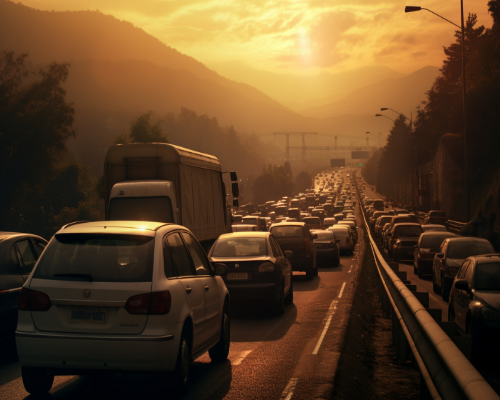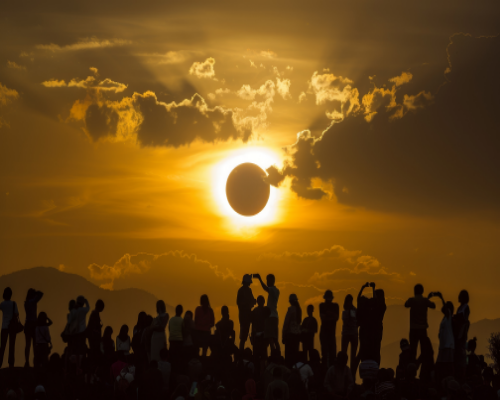I must first briefly explain that our eyes and other senses see or detect what is actually in front of them and transmit that to our brain’s neuroreceptors as electrical impulse. The brain interrupts those signals and creates images that allow us to visualize the picture seen by the eyes or any condition that is sensed. In order for the brain to create an image, it must have some basis, usually from memories, on which to build the image or conditions we are sensing. The issue here is that we have NO memories of what the eyes and other senses are transmitting. Consider what happens in a matter of seconds, as totality begins.
- A slightly dim, 9:15am morning with Sun and shadows, suddenly turns to fully dark.
- The slight breeze we felt stops completely to motionless air.
- The temperature drops about 15-20 degrees in the first few seconds.
- A semi lit 9:15am blue sky turns dark and tens, then hundreds of stars immerge.
- The sound of life, birds chirping, the rustling of leaves in the trees all stop to silence.
- And finally, you find it hard to breathe, breathing seems labored, like there is no air.
We have never experienced any of these events, thus our poor brain has no way to interrupt the signals it is receiving from our eyes and once trusted senses. The initial result is we do not see the stars, and you are dumbfounded about everything else. Slowly your brain finds memories that are similar to all of these, except they didn’t happen at 9:15am. So, while we begin to perceive the absence of light, lack of breeze and sound, we have an overriding sense of confusion, conditions shouldn’t be this way or it doesn’t make sense. When I finally saw the stars, a few at first and then suddenly many more, like light switches were being turned on, one at a time, I said to Ryland and Lucinda, “Look at all the stars”. After a moment of silence, they both said, what stars, the sky is dark…then I heard them utter Wow, I can see few. Our brains had memories of stars at night, but not at 9:15 am on a sunny morning, so it delayed sending us an image.
Every bird in the area was silent and remained silent. This wasn’t just quiet, it more like an absence of sound. Because of the uniform temperature drop, there was no differential between lighter (rising) Sun lit air and the cooler (falling) air under the shade of a tree, thus there was no movement or rush of air from one pressure to another. Then entire serene picture around us was broken when all of a sudden, from all around the field, dozens of chickens were running as fast as they could, using their wings to propel and help stabilize them as they ran to their coop. It only took a few seconds and they were safe and the silence and stillness returned.
There is more to totality, like the Corona and the Diamond Ring, both covered in the book, but this just scratches the surface to what totality is, how it is a once in a lifetime event and is really life-changing. I don’t mean to lessen the experience of seeing any eclipse, but even at 99%, which would be impressive, the experience would pale to a 100% eclipse and totality. Everything changes. There is not partial experience, it is all or nothing. The umbra of totality is roughly 60 miles wide and the closer to the center line you are the better and longer the experience. If you are 1 mile outside of totality, you won’t experience any of the conditions mentioned above, it is all or nothing. So, if you are ever close enough to a total eclipse, I’d highly recommend going the extra mile, it is truly a life-changing event.


